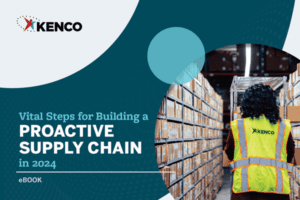The past several years have proven how volatile our global supply chains can be in the face of unexpected circumstances. Labor shortages, plant closures, sourcing issues, and transportation delays disrupted nearly every industry and affected consumers worldwide.
When business is operating as usual, a few minor shake-ups in the supply chain can usually be handled without much disruption. But consistently managing your supply chain in a reactive mode has risks that shouldn’t be ignored.
Wasteful Spending
Every supply chain leader strives to build a lean supply chain. But when your management strategy errs on the side of reactive versus proactive, wasteful spending can be a byproduct that kills operational efficiency. For example, staffing your shifts is an area that can make a significant dent in profitability. When you aren’t able to predict or anticipate attendance on a given day, you can be susceptible to high overtime or overstaffing costs.
Fines and fees can also contribute to wasteful spending. Businesses may accrue hefty fees for unintended events and transportation delays. Slow-moving inventory can cause overflow charges to rack up from the warehouse, and import delays can result in high detention and demurrage fees for causing congestion at the port. These extraneous fees can add up to hundreds of thousands of dollars per month and may be avoided with better visibility and foresight.
Gain insights into your level of reactivity vs proactivity by reading our blog, “Do You Have A Proactive Supply Chain Design Or A Reactive One?”
Dissatisfied Customers
Supply chains are inherently connected, which means each stage, from sourcing to delivery, has the potential to drastically impact subsequent steps. An upstream delay in sourcing or manufacturing might impact warehousing inventory counts and capacity, which can affect transportation schedules, and so on. If issues at any stage aren’t caught early enough, the consequences can snowball down and cause poor customer experiences, like delayed, incomplete, or incorrect orders.
Missed Opportunities to Improve
Without the ability to see and spot supply chain threats from far away, your business becomes blind to opportunities to improve, putting you in a vulnerable position against the competition.
However, when you do have that visibility, your business can make decisions proactively that lead to outcomes that benefit both customers and the bottom line.
To illustrate, here’s a simple example involving network design decisions for a national shoe retailer:
With real-time inventory and purchase data, a shoe retailer discovers that their men’s size 13 loafers are selling well in both the West Coast and Southeast. This causes them to decide to ship all of their West Coast orders out from a closer warehouse in the Midwest instead of their Southeast warehouse. By doing this, they realize two benefits:
1. Faster delivery times for West Coast customers2. More availability of size 13 shoes in their Southeast warehouse for their Southeast customers
Proactive decisions like these help improve efficiency and customer satisfaction, ultimately positioning your business strongly against competitors.
Building a Proactive Supply Chain

Designing a proactive supply chain sets your business up to minimize waste, improve customer relations, and compete strategically against your competition. And forewarned is forearmed, so start your journey to building a proactive supply chain by reading our latest eBook, Vital Steps for Building a Proactive Supply Chain, for a proven approach to getting in front of volatility.
